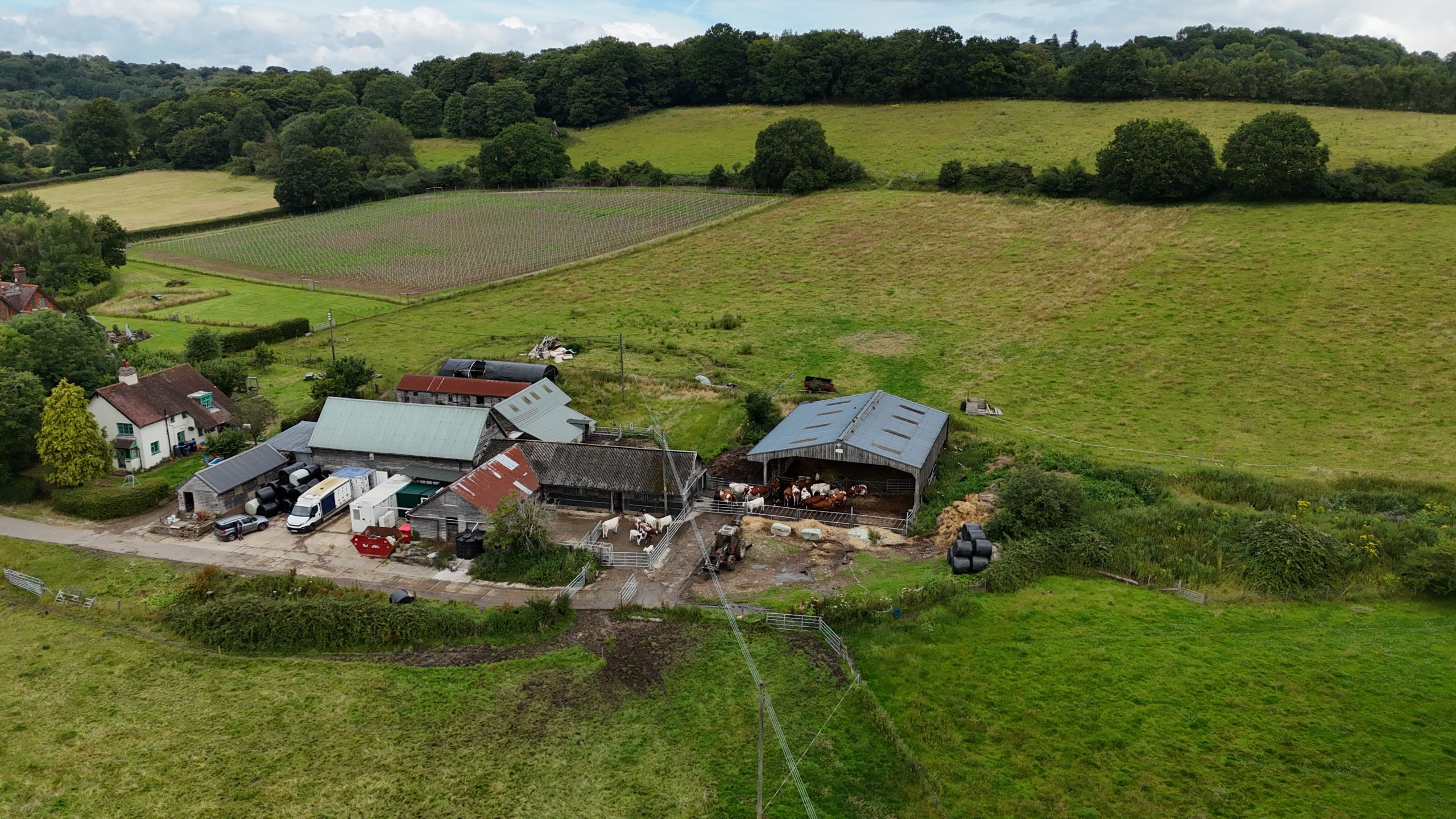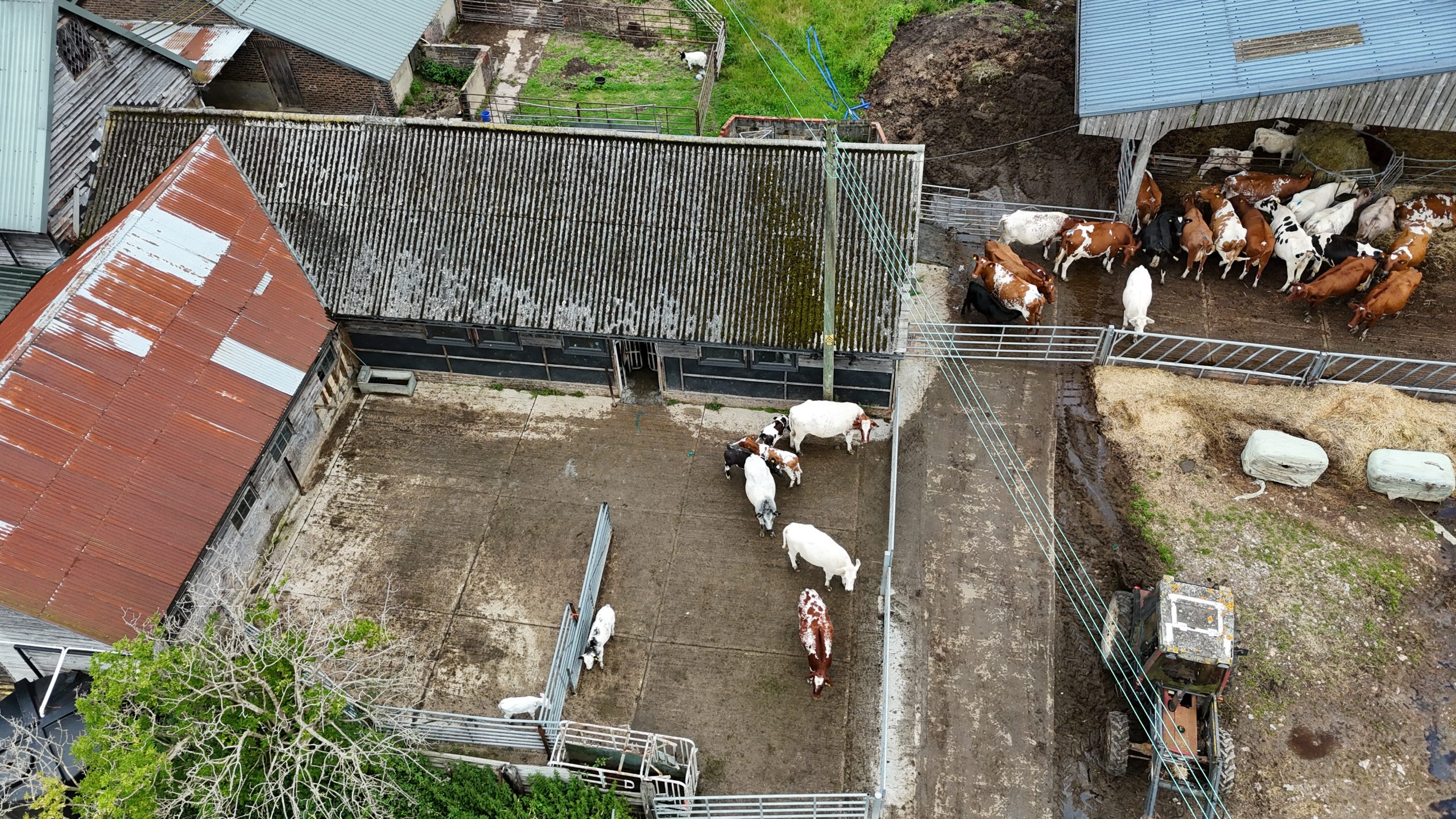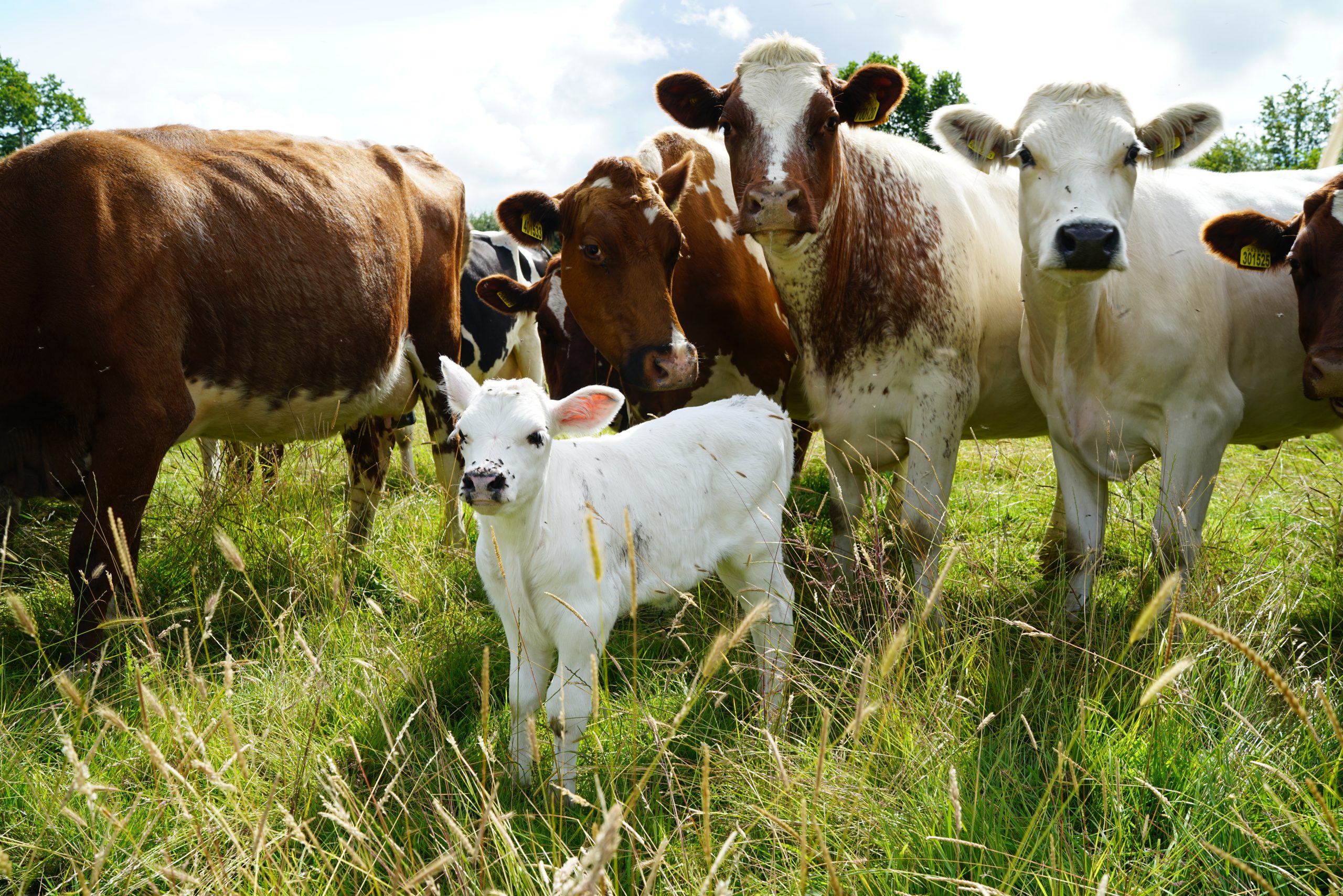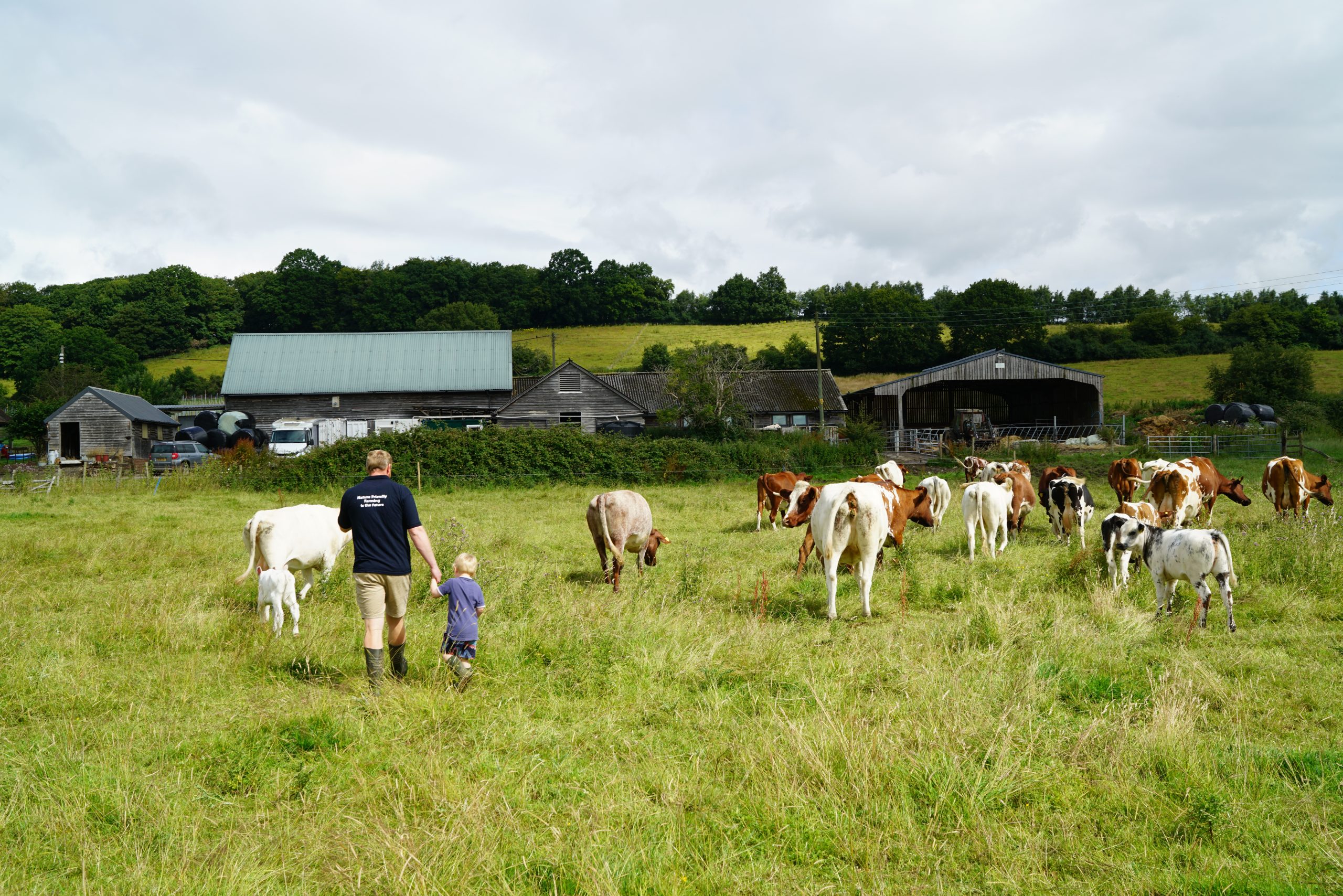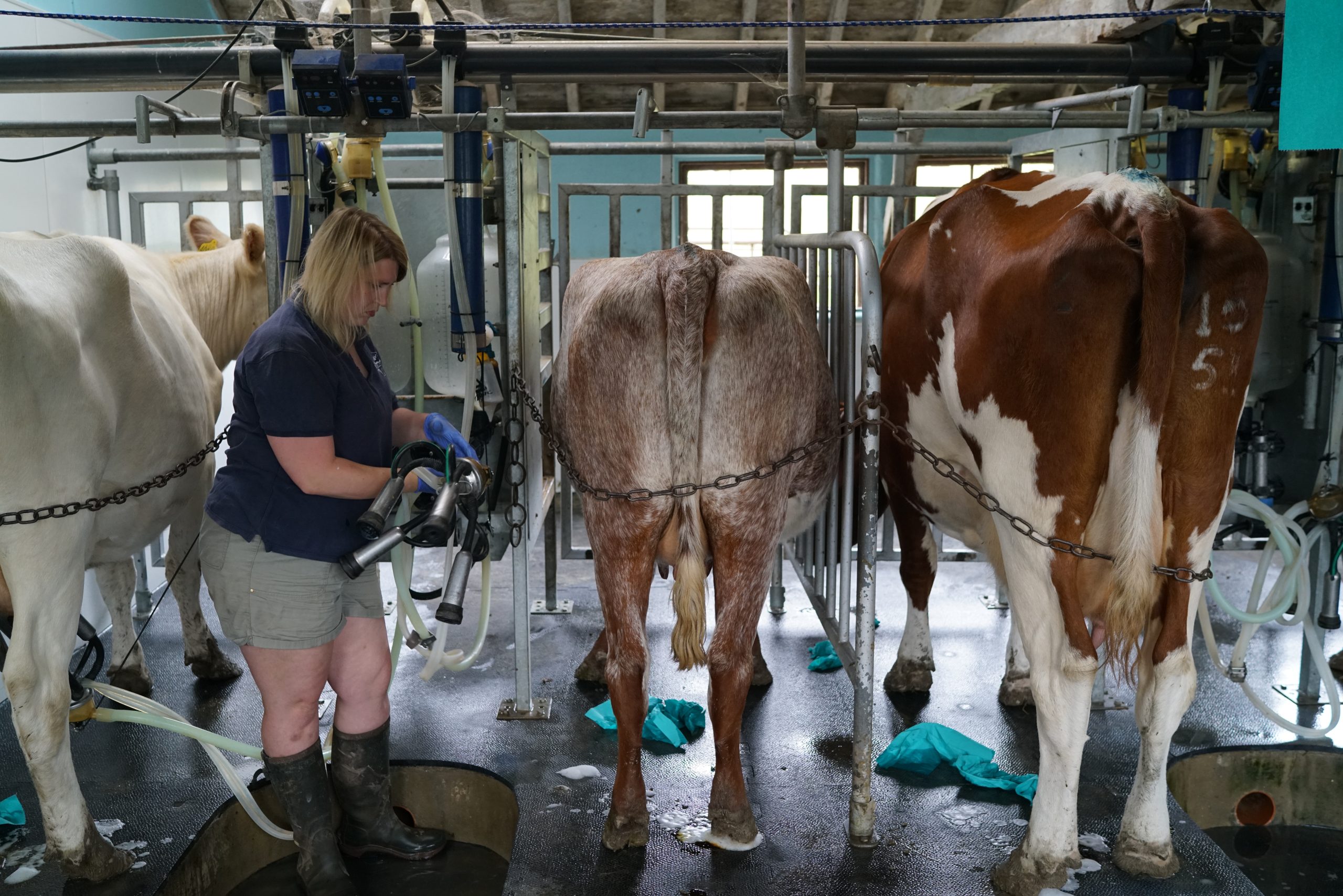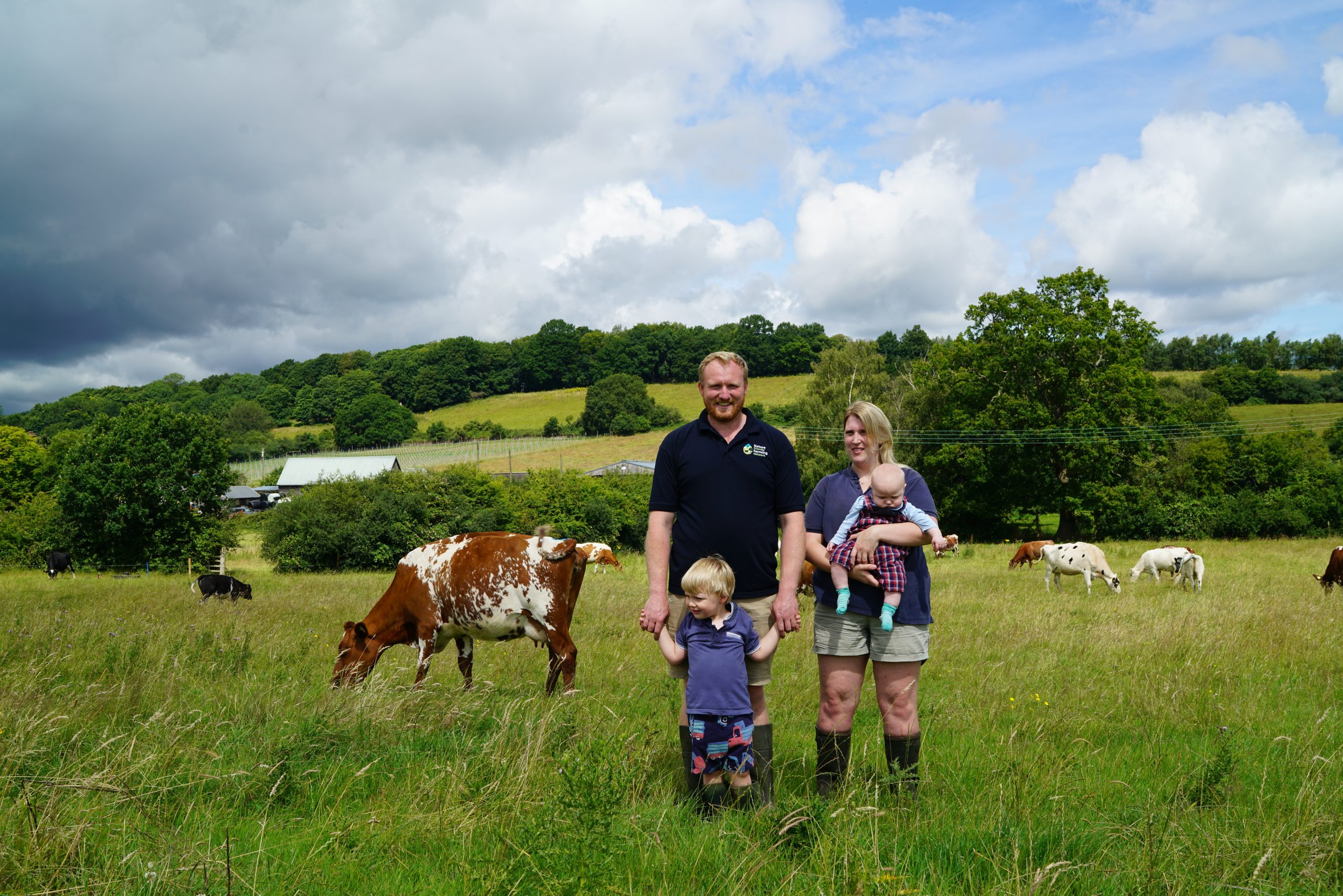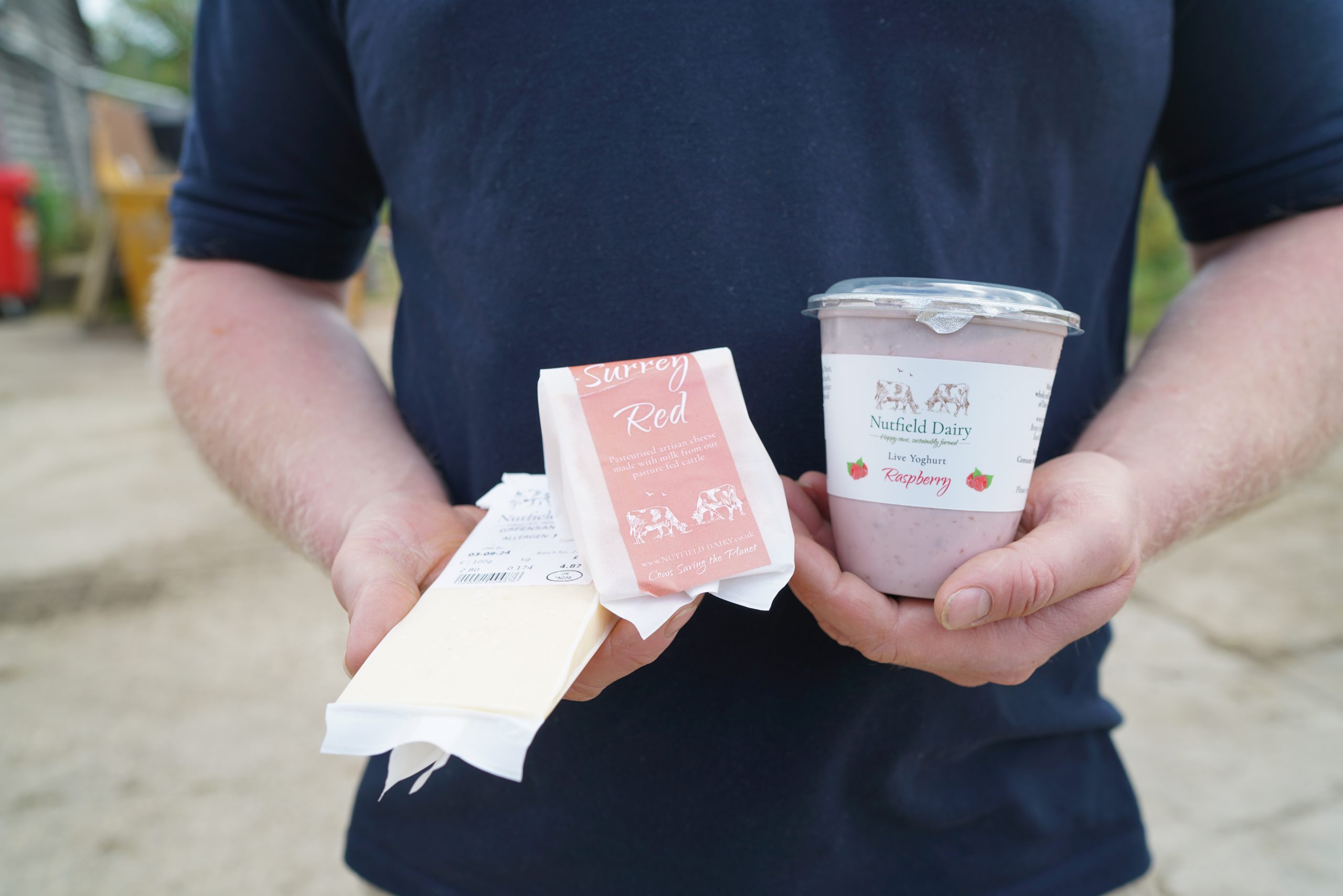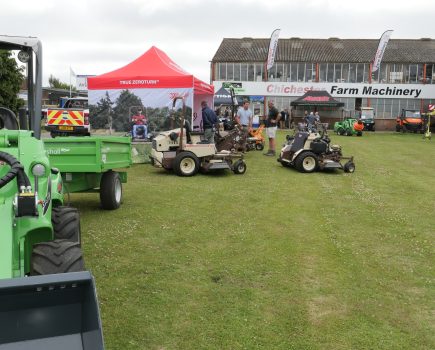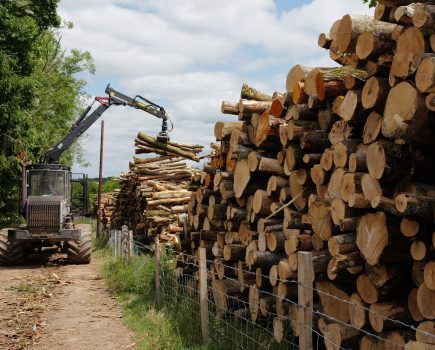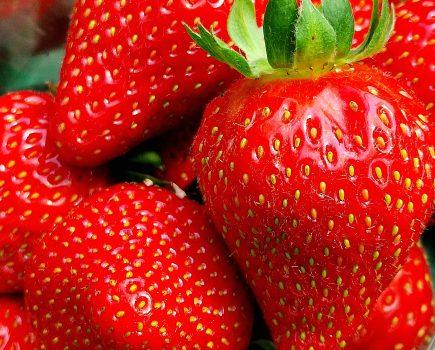This month Nigel Akehurst visits Brays Farm, a 52-acre tenanted holding on the edge of the village of South Nutfield in Surrey to meet first-generation dairy farmers Matthew Elphick and Betsie Edge and learn about their calf-at-foot dairy and plans to convert an old milk float into a mobile shop.
Turning off Bower Hill Lane onto a long straight private drive with electric gates, I passed a large house on my left and kept going until I reached Brays Farm at the end. As I parked up in the yard in front of an old cluster of traditional timber and brick farm buildings, I noticed a small herd of shorthorn cows and calves grazing in the field opposite.
Finding my way to the dairy parlour, I met Matthew Elphick and Betsie Edge, along with their two small children Albie and Rory (three years old and five months old), getting ready to bring the cows in for milking.
They generally aim to milk the cows at 9am, explained Matthew – positively tardy by most dairy farm standards – but today it’s gone 10 as he agreed to delay milking by an hour so I could be there to take some photos.
Bucking the old farming adage – “get big or get out” – Matthew and Betsie are managing to make a living from a micro-herd of 20 dairy shorthorn cows, milking them just once a day.
Low input calf-at-foot dairy system
“It’s a low-input system,” said Mathew, but that’s where the processing comes in. “We’re adding value back,” he explained as we walked through the field to bring the girls in for milking.
They run a calf-at-foot system, he said, gesturing to the shapely calves running with their mothers. As the name suggests, after birth the calf is kept on the cow for three to four months, rather than being taken off after a few days as is standard practice on most dairy farms.
It’s about getting the balance right, he suggested. “We’re dairy farmers, so we’re producing milk, but the income from these calves is really handy – especially when they look this well and go for top money.”
His young beef calves can fetch upwards of £320 and the dairy bull calves sell for around £250, he added.
Pointing out a striking young white heifer calf with a black nose, Matthew said they were thrilled to have their first Albion calf born on the farm to one of the three in-calf heifers they bought from Adam Henson back in November.
He explained that Albion cattle were a dual-purpose breed and on the critically rare species list.
After getting the herd into the concrete collection yard in front of the parlour, we headed through the side door into the eight-abreast milking parlour.
Inside the old cow shed complete with picturesque timber roof beams, it was like stepping back in time. I was amazed when Matthew explained they only installed the eight-abreast parlour in 2020, sourcing all the kit second hand and carrying out a lot of the installation work themselves.
The building was formerly used as a lambing shed and they subdivided it into two spaces, a large room used for the milking parlour and the other part to house the bulk tank and pasteurising machine.
After being let into the parlour, the first group of cows quickly filed in and stood up on their milking platforms, ready to be milked. Betsie set about cleaning their teats and I quizzed Matthew on how they divided up their farm chores.
Betsie’s role on the farm is the milking, he replied – often while looking after the children, he added, pointing to Rory, their five month-old who was fast asleep in the buggy. He can be a bit of handful when he’s awake, Matthew added with a smile.
Matthew handles all the outdoor jobs, processing the milk into products and the deliveries, while both Matthew and Betsie sell their products at farmers’ markets.
In less than an hour Betsie had milked all 18 cows and they were ready to go back out to a new paddock.
Moving from set stocking to multi-paddock grazing
They used to set stock their cows, said Matthew, but decided to move to rotational multi-paddock grazing (also known as regenerative grazing, he said) after dividing their farm into 30 paddocks using electric fencing and lots of blue water pipe last year.
Each paddock has at least 30 days’ rest, which he said had greatly improved biodiversity and their soils, building organic matter by pulling down carbon dioxide from the atmosphere.
They have also noticed a better growing season grazing like this compared to set stocking, where they would often need to supplementary feed outside, he added.
As well as the benefit to the environment, Matthew has also noticed improvements to the health of his cows and they no longer worm any of their animals or use any fly treatment.
I asked what prompted this change in management?
“I would have always considered myself a nature-friendly farmer, but I never understood how the two can co-exist and enhance each other. I developed an interest in soil a couple of years ago and that led to reading a few books, including by Gabe Brown and Nicole Masters, as well as Alan Savory’s Holistic Management,” he replied.
“That got me thinking about how farming can benefit our ecosystem and environment. Cows aren’t the demons that they are made out to be by the mainstream media. That’s why I was grateful to get involved in the Nature Friendly Farming Network as a farming champion because it helps me to promote this way of farming.
“It’s not the cow that’s the problem, it’s the way we farm them; in a regenerative system like this they can be part of the solution. Yes, they produce methane, but the pros of grazing ruminant livestock far exceed the cons. By improving soil they help restore a healthy functioning ecosystem, improve food nutrient density and allow efficient carbon sequestration.”
First generation farmers
Keen to learn more about his experience of getting into agriculture, I asked how he got into farming?
Despite having no family connection, Matthew decided farming would be a good career choice at a young age. After studying at Plumpton College, he began working as a herdsman and then for Stock 1st Livestock services.
During this time, he managed to rent a bit of ground and some buildings from someone who had retired from cattle farming. This enabled him to gain vital experience, and he started to build up a small herd of suckler cows.
Then a neighbour recommended him to John Collett, the previous owner of Brays Farm. John wanted to find a young farmer who could take responsibility for the place so he didn’t have to worry about it. He left the farm in his will to the Countryside Regeneration Trust (CRT), a wildlife and farming charity, explained Matthew.
“The CRT has some 18 farms across the country and promotes nature friendly and regenerative-style farming, so I met with them as well to make sure they would be happy for me to carry on – which they were.”
After John died it took nearly four years to go through probate so the couple couldn’t move into the farmhouse until 2021 when the CRT was given ownership, he explained.
“They’ve been really supportive landlords,” he added. “They like what we’re doing here, how we’re farming and what we want to do.”
Initially Matthew ran his herd of beef suckler cows alongside a small flock of sheep, but dairy farming was always the end goal. He met Betsie in 2019 and in 2020 they sold his beef cattle and sheep and set up the dairy together.
They feel very lucky to have been given the opportunity because it’s so tricky to be able to get into farming, he said. Even council farms haven’t always gone to new entrants, he commented, adding: “It’s always a shame when you see a bigger farmer getting bigger; we need those opportunities to get in.”
Cheese, yoghurt and plans to set up a mobile farm shop
Back in the farmyard, Matthew showed me their processing cabin next to the dairy, where he processes all the milk into yoghurt and cheese. The milk goes straight from the inline pasteuriser via a metal pipe into the purpose-built cabin.
Matthew currently makes around 100 litres of yoghurt a week (about 300 pots) to sell locally, while the rest of the milk goes for making two different cheeses. They make a cheddar called Greensand Bray that is named after the Greensand Way that runs through the farm and is matured for at least six months.
Their other cheese is called Surrey Red and is based on a French-style Alpine cheese, which is semi-soft and matures for about two months. They use annatto to give this cheese its red colouring to match their shorthorn cows.
They also used to bottle all their milk in the processing rooms but decided to stop their milk round back in late 2022 after rising costs meant it wasn’t viable anymore.
Matthew explained that they had originally planned to convert an existing farm building into a shop but had been forced to rethink the plan because of issues with their shared driveway.
Crowd funding
Walking around to a traditional timber beam hay barn, Matthew showed me their milk float and explained their plans to turn it into a mobile farm shop.
“We used to do our milk round using the float. It is an old-school electric one and was a bit steady, especially on the hills round here,” he joked.
They plan to drop the floor to install yoghurt and milk dispensers, along with a display fridge for their cheeses and other products like cream.
To help pay for the conversion work and a new electric battery, they are running a crowd funding campaign. At the time of my visit, they had already raised over £8,000 towards a target of £30,000.
If successful they hope to carry out the work over the summer and start selling at local villages within a five-mile radius of the farm, helping improve their margins by selling more of their products direct.
Advice for new entrants
With my visit drawing to an end, I asked Matthew if he had any advice for other new entrant farmers looking to get on the farming ladder?
“For me it was finding those more informal ways of renting a bit of land and some buildings; it’s tricky with a tenancy, especially if you haven’t got the background or the capital behind you either,” he replied.
“Looking back, I tried to get too big too quickly. I tried to get lots of animals – I thought that was the way to go. I’ve always had to grow on debt and borrow money to progress, which does make things harder. There are no other options when you’re putting in a dairy and all the rest of it, but when you are working full time and trying to start up, it doesn’t matter if you start with five or 10 animals – keep them profitable and keep them looking good and grow on your profits,” he said.
“I’d also encourage new entrants to educate themselves in regenerative, holistic management. It wasn’t taught when I was at college and I really feel if I had been able to adopt these methods from the beginning, not only would the farm be supporting more wildlife, but I’d be better off finically by knowing how to farm without all those expensive inputs like fertiliser.”
Heading home with some yoghurt and cheese (which was delicious), I felt inspired and hopeful following my visit to Nutfield Dairy. It demonstrates that small-scale dairy farming can be beneficial to the environment and provide a good livelihood for new entrant farmers.
- default
- default
- Matthew Elphick and Betsie Edge with their two children
- Matthew with the old milk float
Farm facts
- 52 acre holding of permanent pasture owned by Countryside Regeneration Trust
- Predominantly clay with sandy soil on high ground
- Herd of 30 cows (including dry cows and heifers)
- Make yoghurt and two cheeses (Surrey Red and Greensand Bray)
- Currently sell their products at local farmers’ markets and wholesale to local shops, deli’s, butchers and pubs
- Crowd funding to convert an electric milk float into a mobile shop
- Buy in majority of silage and hay feed but managed to make hay on one field this year
- Cows kept inside for around five months of the year
- Pasture for Life (PFL) members with long term plan to become PFL-certified
For more like this, sign up for the FREE South East Farmer e-newsletter here and receive all the latest farming news, reviews and insight straight to your inbox.


